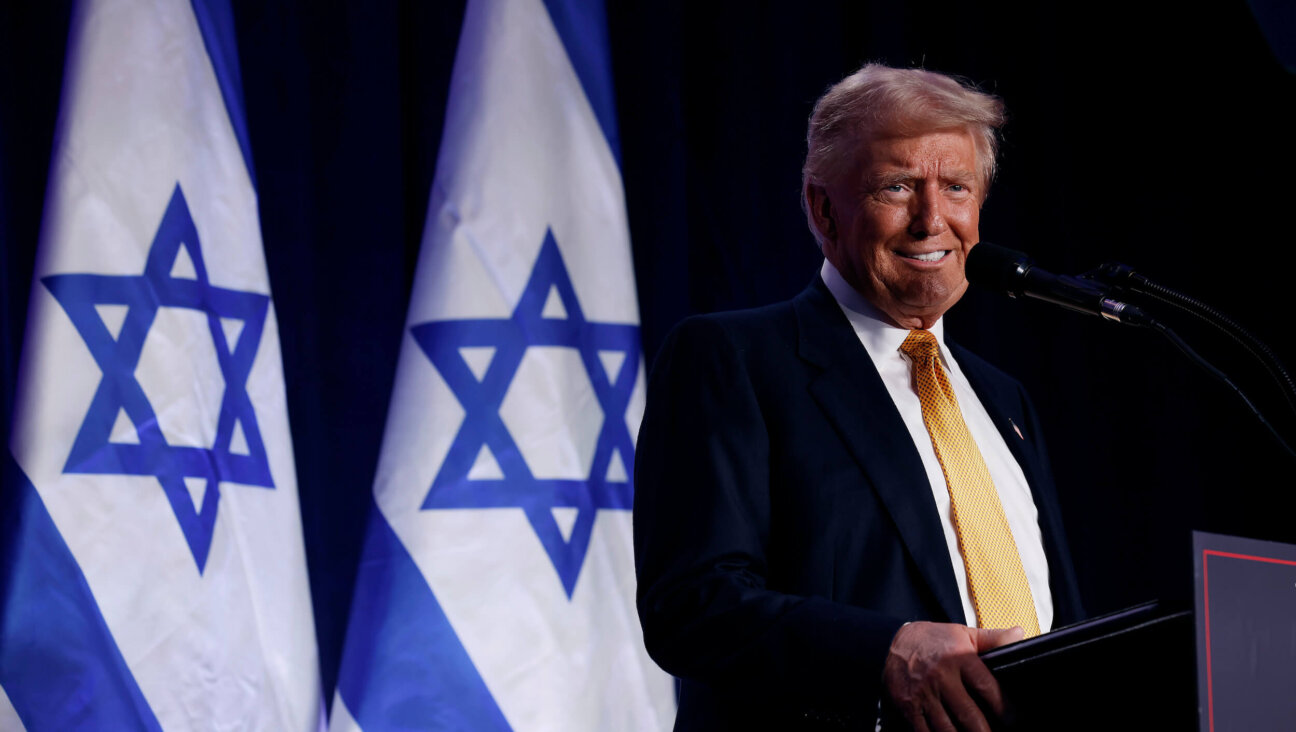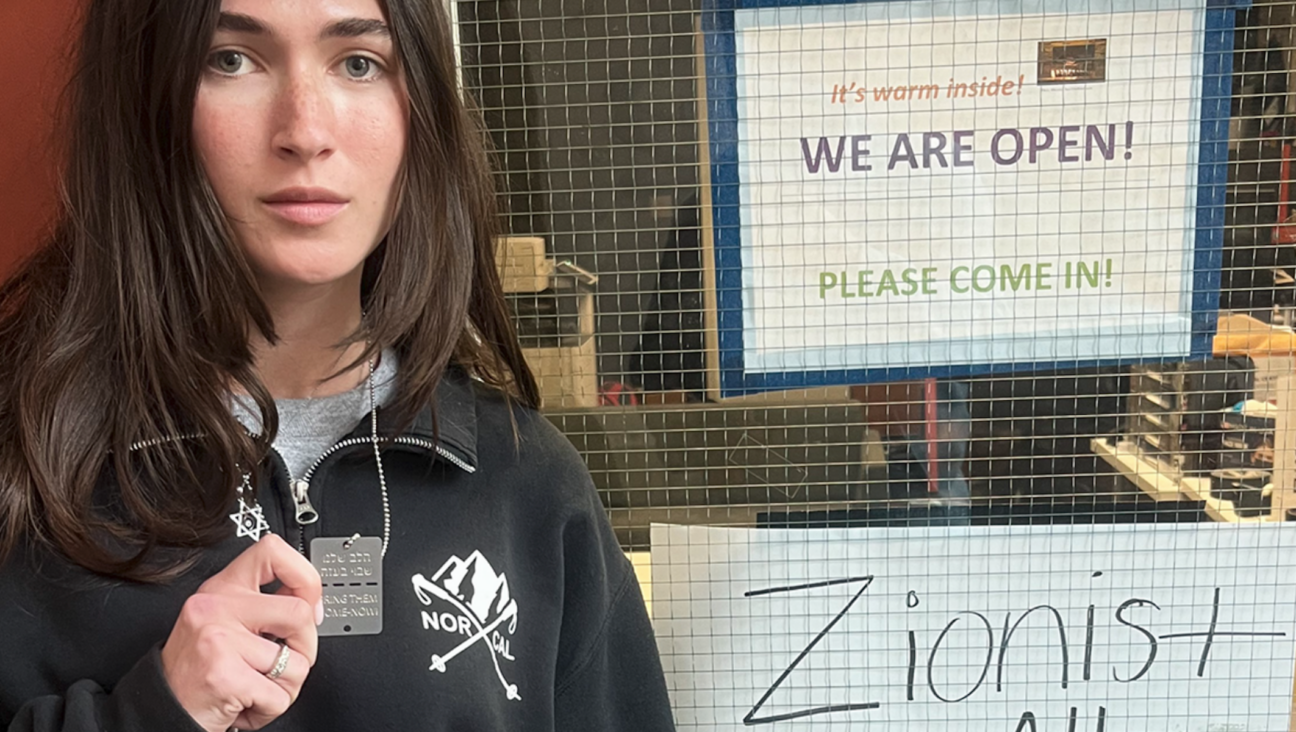Rookie Scores as NFL’s First Player From Former Soviet Union
Basketball may have been the first American sport to squeeze an arm around the old Iron Curtain, but before the Soviet Union fell, it wouldn’t be the last.
In the late 1980s, glasnost and perestroika delivered rock stars and blue jeans to the curious masses, as well as American football — played by hardscrabble groups of working-class men on fields in the northern districts of Moscow. Lacking access to proper equipment, some improvised by using old motorcycle helmets. Head injuries ran high.
Hundreds of miles southwest, in the Ukrainian city of Dnepropetrovsk, such mishaps didn’t make the news. For Igor Olshansky, a young boy at the time growing up in Ukraine’s iron and steel center, not learning of Moscow’s football experiments was probably for the better.
Some 15 years hence, Olshansky is a hulking 6-foot, 6-inch, 315-pound athlete who can run 40 yards in less than five seconds and is being compared to some of the best defensive lineman ever to play the game. A rookie on the San Diego Chargers, who won their opening week game 27-20, not only is Olshansky the first Jewish athlete from the former Soviet Union to play professionally in the NFL — he’s also the first NFL player from the Soviet Union… period.
“I don’t even know what I would have done in sports if I’d stayed over there,” Olshansky said in an interview with the Forward last week.
Polite and soft-spoken, with just the slightest hint of an accent, he is well aware of the improbability of his immigrant life story. Olshansky and his family immigrated to San Francisco around the time the Berlin Wall fell when he was 7 years old. It wasn’t until his freshman year of high school that he even thought of football. And it wasn’t until his sophomore year that, at the behest of the school’s retired head coach, he donned equipment too small for his Goliath frame and lined up over tackle.
“What he’s done is extraordinary because he’s such a latecomer,” said Olshansky’s agent, Leigh Steinberg. After representing NFL players for 30 years, Steinberg believed he might go his entire career never representing an athlete who shared his own ethnicity, let alone a player born in the shadow of the Babi Yar.
“That Igor comes from a part of the former Soviet Union that’s long been associated with virulent antisemitism, and that he’s overcome that background to be on the cusp of NFL stardom, is a very compelling story,” Steinberg said.
As a boy, Olshansky’s first love was basketball. It was what his father played while serving in the Red Army, and in the family’s new apartment in San Francisco it was basketball and boxing that filled sports conversation and the émigré’s imagination. Even now, American football is puzzling to his parents and older sister. On the eve of his first NFL huddle, Olshansky said his family had no plans to attend the game in Houston and he didn’t know whether they would watch it on television. “I don’t know,” he said, “I’m sure they’ll try to catch it somewhere, somehow.”
Olshansky himself has crammed his own football education into the span of just a few years. He had the most American of motivations. From the start, coaches told him if he “got on the football train” and learned to use his athleticism to swim past guards and sniff out screens, someday he might be signing a multimillion dollar NFL contract. Even last year this appeared optimistic, but Olshansky dramatically raised his draft stock at the NFL combines last spring. This summer, the early second-round draft pick signed a reported $4.515 million pact with the Chargers, one that could hit more than $7.5 million with incentives and more than $2 million already guaranteed.
And Olshansky is already earning his keep. Expected to be a reserve player, he left training camp as a starter. In his first game against Houston on Sunday, he led the defensive line with four tackles. Already chants of “Igor, Igor” which rumbled across Autzen Stadium at Oregon, where he was a collegiate star, have begun percolating at San Diego’s Qualcomm Stadium, with Charger fans eager for a new folk hero since the departure of Junior Seau last year.
“Just starting in his rookie year is extraordinary,” Steinberg said. “Given how young he is and that he’s still learning the game, he is still a year or two away from being completely physically mature. Just imagine where he’s going to be in four or five years.”
Steinberg believes Olshansky can become a star for football fans at large, as well as within the Jewish community. In the NFL this would be a long time coming; not since Hall of Fame quarterback Sid Luckman sliced opposing defenses for the Chicago Bears of the 1940s has a Jew been a dominant force in the league. When asked with whom Olshansky might compare as an experienced player, Steinberg mentioned Hall of Fame defensive end Howie Long. When asked whom Olshansky might approach in terms of value to the Jewish community, the first name was Sandy Koufax.
Where hyperbole ends and reality starts will be measured on the football field. “I take everything with a grain of salt,” Olshansky said of such lofty comparisons. “Everything I do, I try and do my best. My goal is to have a winning season, do my job on the field.”
Chargers’ head coach Marty Schottenheimer is also keeping expectations low key. “He’s a pretty bright kid,” Schottenheimer said in a statement to the Forward. “He puts stuff together well. It’s going to take him some time. It would be impossible for me to predict how quickly he’s going to progress.”
Everyone seems to agree on two things: Olshansky has a combination of size, speed and brains rarely seen in the NFL; his scores on league intelligence tests surpassed even most quarterbacks this year. However, he remains a work in progress — one who took years to develop in high school and college and who will need to depend upon much more than physical talents to be a successful player in the league.
“The first thing, and he’s aware of it, is that he needs to be successful on the field,” Steinberg said. “He needs to stay focused and have a successful rookie season. The engine to everything is his success in games.”
Should success come, Olshansky will not only have Charger fans in his corner, but also a national Jewish community eager to dispel stereotypes of Jews as small and lacking physical prowess. He also might find the NFL eager to capitalize upon his birthplace to promote football in the former Soviet Union, much as the NBA has utilized Yao Ming as a basketball ambassador to China. Already the league helps organize Russian youth games and flies announcers to the Super Bowl, and Russia’s leading adult team, the Moscow Patriots, compete against other European squads.
It’s a long way from Soviets donning motorcycle helmets, a long swim to San Diego from Dnepropetrovsk and a long time since Jewish football fans have had much to cheer about. But Olshansky says he’ll do his best to shoulder everyone’s expectations. And he just might have the shoulders to do it.
The Forward is free to read, but it isn’t free to produce

I hope you appreciated this article. Before you go, I’d like to ask you to please support the Forward.
At a time when other newsrooms are closing or cutting back, the Forward has removed its paywall and invested additional resources to report on the ground from Israel and around the U.S. on the impact of the war, rising antisemitism and polarized discourse.
Readers like you make it all possible. We’ve started our Passover Fundraising Drive, and we need 1,800 readers like you to step up to support the Forward by April 21. Members of the Forward board are even matching the first 1,000 gifts, up to $70,000.
This is a great time to support independent Jewish journalism, because every dollar goes twice as far.
— Rachel Fishman Feddersen, Publisher and CEO
2X match on all Passover gifts!
Most Popular
- 1

Fast Forward The NCAA men’s Final Four has 3 Jewish coaches
- 2

Fast Forward Cory Booker proclaims, ‘Hineni’ — I am here — 19 hours into anti-Trump Senate speech
- 3

News A Jewish Republican and Muslim Democrat are suddenly in a tight race for a special seat in Congress
- 4

Fast Forward Cory Booker’s rabbi has notes on Booker’s 25-hour speech
In Case You Missed It
-

Fast Forward Texas bakery reportedly becomes first bagel shop to be named James Beard Award finalist
-

Fast Forward ‘That’s Simchas Torah’: The Jewish Val Kilmer moment you might have missed
-

Opinion I co-wrote Biden’s antisemitism strategy. Trump is making the threat worse
-

Fast Forward From ‘October 8’ to ‘The Encampments,’ these new documentaries illuminate the post-Oct. 7 American experience
-
Shop the Forward Store
100% of profits support our journalism
Republish This Story
Please read before republishing
We’re happy to make this story available to republish for free, unless it originated with JTA, Haaretz or another publication (as indicated on the article) and as long as you follow our guidelines.
You must comply with the following:
- Credit the Forward
- Retain our pixel
- Preserve our canonical link in Google search
- Add a noindex tag in Google search
See our full guidelines for more information, and this guide for detail about canonical URLs.
To republish, copy the HTML by clicking on the yellow button to the right; it includes our tracking pixel, all paragraph styles and hyperlinks, the author byline and credit to the Forward. It does not include images; to avoid copyright violations, you must add them manually, following our guidelines. Please email us at [email protected], subject line “republish,” with any questions or to let us know what stories you’re picking up.















